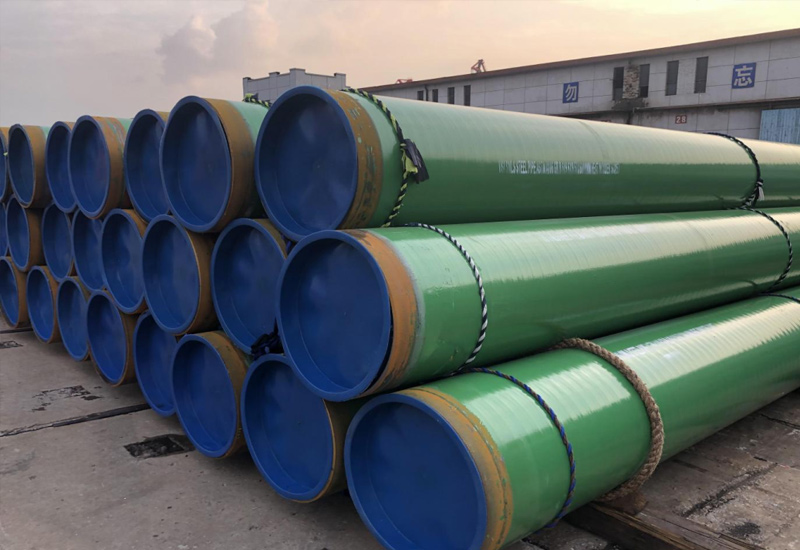HOT BLOG TAGS
ASTM A53
ASTM A53/A53M: Technical Specifications for Carbon Steel Pipes
Standard for Seamless and Welded Black/Galvanized Steel Pipe in Pressure Applications
1. Scope and Classification
1.1 Definition and Applications
ASTM A53/A53M specifies requirements for seamless and welded carbon steel pipes with optional galvanization. It covers three product types:
Type F: Furnace-welded (continuous weld)
Type E: Electric-resistance welded (ERW)
Type S: Seamless (hot-finished or cold-drawn)
Primary Applications:
Low/medium-pressure fluid transmission (steam, water, gas, air)
Structural supports and mechanical components (non-cyclic loading)
Corrosion-mitigated environments (galvanized version only)
1.2 Grades and Limitations
| Grade | Yield Strength (min) | Tensile Strength (min) | Key Restriction |
| Grade A | 205 MPa (30 ksi) | 330 MPa (48 ksi) | Not for flanging (Type F) |
| Grade B | 240 MPa (35 ksi) | 415 MPa (60 ksi) | Preferred for cold bending |
Design Temperature Limit: ≤350°C (660°F)
2. Dimensional Requirements
2.1 Size Range
Nominal Pipe Size (NPS): 1/8″ to 26″ (DN 6 to DN 650)
Schedule Thickness: Sch 10, 40, 80, 160, XXS
2.2 Critical Tolerances
| Parameter | Tolerance | Applicability |
| Outside Diameter | ≤48.3 mm: ±0.40 mm ≥60.3 mm: ±1% | All types |
| Wall Thickness | ±12.5% of nominal WT | S/E/F Types |
| Weight | ±10% per lot | Commercial |
| Straightness | ≤0.3% of pipe length | >6 m lengths |
3. Chemical and Mechanical Properties
3.1 Chemical Composition (wt%, max)
| Element | Grade A | Grade B | Control Objective |
| Carbon (C) | 0.25 | 0.30 | Weldability |
| Manganese (Mn) | 0.95 | 1.20 | Strength enhancement |
| Phosphorus (P) | 0.05 | 0.05 | Cryogenic embrittlement |
| Sulfur (S) | 0.045 | 0.045 | Hot workability |
| Total Alloys* | ≤1.00 | ≤1.00 | Corrosion resistance |
*Cu+Ni+Cr+Mo+V
3.2 Mechanical Properties
| Property | Grade A | Grade B | Test Standard |
| Yield Strength | ≥205 MPa (30 ksi) | ≥240 MPa (35 ksi) | ASTM A370 |
| Tensile Strength | ≥330 MPa (48 ksi) | ≥415 MPa (60 ksi) | ASTM A370 |
| Elongation (%) | Calculated* | Calculated* | ASTM A370 |
| Y/T Ratio | ≤0.93 | ≤0.93 | – |
Elongation Formula:
\delta = \frac{1940 \times A^{0.2}}{U^{0.9}}
Where: A = cross-sectional area (mm²), U = tensile strength (MPa)
4. Mandatory Testing Requirements
4.1 Destructive Tests
Flattening Test:
Smooth (Type S): Two-Step Flattening — first, partial flattening (H → contact with the wall)
Seam Welded (E/F) Three-step flattening (2/3D→ 1/3D→Wall contact)
Bend Test:
OD ≤60.3 mm: 90 degree bend with 12D hob bendmask (12D mandrel)
Pipe in coil: Mobility of 180° bend on 8D mandrel
4.2 Non-Destructive Examination (NDE)
| Method | Acceptance Criteria | Alternative to Hydrotest |
| Ultrasonic (UT) | No laminations >12.5% WT | Yes (per Clause 12.3) |
| Eddy Current (ET) | Discontinuities ≤0.85 mm depth | Yes |
| Magnetic Particle (MT) | Surface defects ≤0.4 mm | No |
4.3 Hydrostatic Test
Pressure: ≥1.5 × design pressure (max 90% SMYS)
Duration: ≥10 seconds
Leakage: Zero tolerance
5. Galvanization Requirements (Optional)
| Parameter | Requirement | Standard |
| Coating Thickness | ≥610 g/m² (2.0 oz/ft²) | ASTM A123/A123M |
| Zinc Adherence | No peeling after 2T bend test | ASTM E290 |
| Surface Finish | Smooth, free from lumps and dross | Visual inspection |
6. Engineering Applications & Technical Data
6.1 Case Studies
Power Plant Steam Lines:
Pipe: S Type, Grade B, Sch 80 (NPS 12)
Service: 300°C @ 4.5 MPa
Life: 25 years or greater (less with wall thickness above that of Schedule 160)
Urban Gas Distribution:
Pipe: Pipe shall be Type E, Grade B, Galvanized (NPS 4)
Protection from the elements: Zinc coating would last 40 plus years
6.2 Performance Metrics
| Metric | Value | Benefit |
| Failure Rate | 0.09 incidents/1,000 km-year | 65% lower than non-standard |
| Material Savings | 15% (Grade B vs. traditional) | $120K savings per 10 km line |
| Hydrotest Pass Rate | >99.8% (with UT/ET alternative) | Reduced commissioning time |
7. Future-Relevant Updates (2024 Revision)
| Emerging Focus | Technical Response | Timeline |
| Hydrogen Service | Nano-Al₂O₃ coatings (H₂ perm ≤0.3 mL/m²/day) | 2026 Annex |
| Digital Traceability | Blockchain-based data per pipe joint | 2025 Pilot |
| Carbon Neutrality | EAF manufacturing (max 1.8 tCO₂/t steel) | 2030 Target |
Related Products
Share:
HOT TAGS
latest posts
- 3LPP coated pipe: anti-corrosion guard in high temperature and high pressure environment
- ASTM A53 LSAW Steel Pipe Selection Guide for Oil and Gas Transportation Pipelines
- API 5L LSAW Pipe: A Deep Dive into PSL1 vs. PSL2
- Steel Pipe Sizing Errors? DN vs. OD Explained for Buyers
- NDT for Pipe Welds: X-ray vs. Ultrasonic Testing










